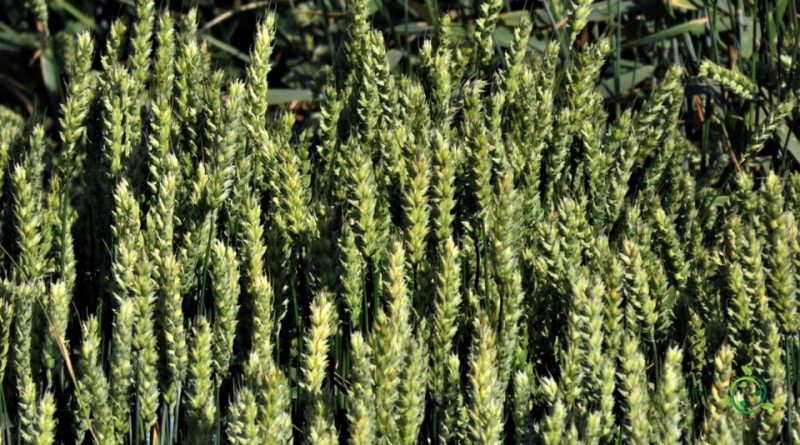Nutritional value of soft wheat
Nutritional value of soft wheat
Soft wheat (Triticum aestivum L.) is a herbaceous plant of the Poaceae family which has a wider cultivation area than other wheats because, due to its resistance to cold, it can also be cultivated in Nordic countries.
Characteristics –
Soft wheat is the species of wheat which, due to its widespread use in bread-making and the production of fresh pasta, assumes the greatest importance among the cereals cultivated today.
It is widely used for the production of flour, which is a fundamental ingredient in many food preparations, such as bread, pasta, biscuits and many other baked products.
Soft wheat is an annual herbaceous plant of the grass family. Wheat roots tend to be fibrous and well-developed, allowing the plant to extract nutrients from the soil.
The stem of soft wheat is erect, cylindrical and can vary in height from a few centimeters to over a meter, depending on the variety and growing conditions.
The leaves are long and narrow, with an alternating arrangement along the stem. They have a smooth surface and an intense green color.
The inflorescence of soft wheat is called an ear. The ear is composed of a series of small flowers called spikelets, which contain the grain seeds.
The seeds of soft wheat are the true fruits of the plant. Each spikelet can contain from 20 to over 50 seeds, depending on the variety.
Soft wheat seeds are elongated in shape and have a color that varies from yellow to light brown, depending on the variety. They have an external surface covered by a layer of bran.
There are numerous varieties of soft wheat, each with specific characteristics, such as resistance to diseases, adaptability to certain climates and yield.
Nutritional card –
The nutritional characteristics of soft wheat may vary slightly based on the specific variety and cultivation conditions; Below is an average estimate of the nutritional values per 100 grams of cooked soft wheat:
Energy value: 339 calories
Protein: 12.6 grams
Carbohydrates: 71.2 grams
Fiber: 12.2 grams
Sugars: 0.4 grams
Fat: 2.5 grams
Saturated fat: 0.4 grams
Monounsaturated fats: 0.6 grams
Polyunsaturated fats: 1.1 grams
Cholesterol: 0 milligrams
Sodium: 2 milligrams
Potassium: 357 milligrams
Calcium: 29 milligrams
Iron: 3.2 milligrams
Magnesium: 138 milligrams
Phosphorus: 346 milligrams
Vitamin B1 (Thiamine): 0.4 milligrams
Vitamin B2 (Riboflavin): 0.05 milligrams
Vitamin B3 (Niacin): 5.1 milligrams
Vitamin B5 (Pantothenic acid): 0.9 milligrams
Vitamin B6 (Pyridoxine): 0.3 milligrams
Vitamin B9 (Folic acid): 38 micrograms
Vitamin E (Tocopherol): 0.3 milligrams
Note that the exact amount of nutrients may vary depending on the preparation and the type of wheat used. Soft wheat is an important source of complex carbohydrates, fiber, proteins and various micronutrients such as magnesium and phosphorus. It is often used to make flour, which is the basis of many food products such as bread, pasta and breakfast cereals.
Property –
Wheat is a major food source in the world and is used to produce a wide range of food products, including bread, pasta, breakfast cereals and many others. Its nutritional properties vary slightly based on the degree of refinement and preparation, but in general soft wheat is a significant source of essential nutrients.
Soft wheat is rich in complex carbohydrates, mainly starch. These provide sustained and essential energy for the functioning of the body.
Soft wheat is a source of vegetable protein, although the protein content may vary. Gluten is a particular protein in wheat that gives elasticity to pasta and bread.
Whole wheat is rich in fiber, which is beneficial for digestion and can help regulate blood sugar levels. Most of the fibers are found in the outer shell of the grain.
Wheat is a source of B vitamins, including thiamine (B1), riboflavin (B2), niacin (B3) and folic acid (B9). These vitamins are important for energy metabolism and other bodily functions.
It contains minerals such as iron, magnesium, phosphorus, zinc and selenium, which are critical for several bodily functions, including bone formation and immune system health.
It also contains antioxidants like vitamin E, which can help fight oxidative stress and contribute to healthy skin.
Wheat is naturally low in fat, but may contain small amounts of unsaturated fat.
It is important to note that much of the nutritional benefits of whole wheat are present in its outer shell, which is removed during refining to obtain white flour. Therefore, to maximize the intake of nutrients, it is advisable to consume products made from whole wheat, such as wholemeal bread or wholemeal pasta.
However, some people may be gluten intolerant or have celiac disease, an autoimmune disease that requires completely eliminating gluten from the diet. Therefore, it is important to pay attention to individual dietary needs when consuming soft wheat.

